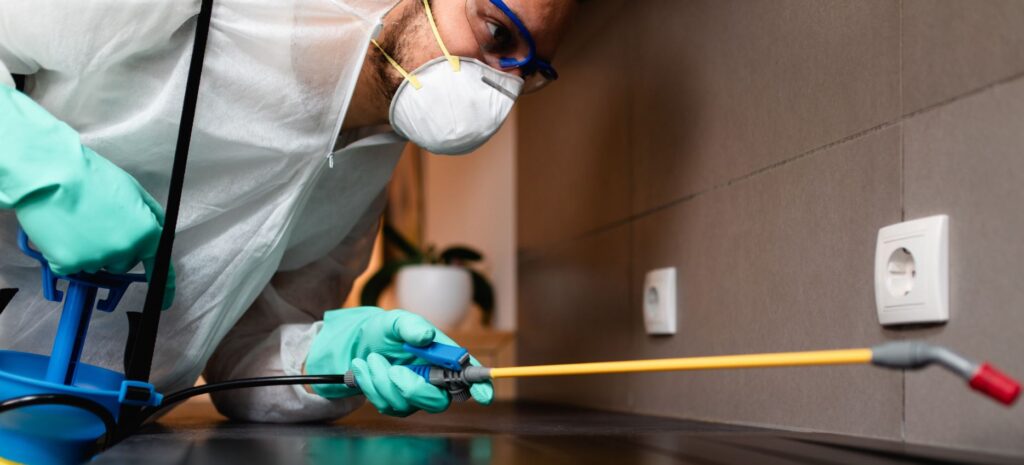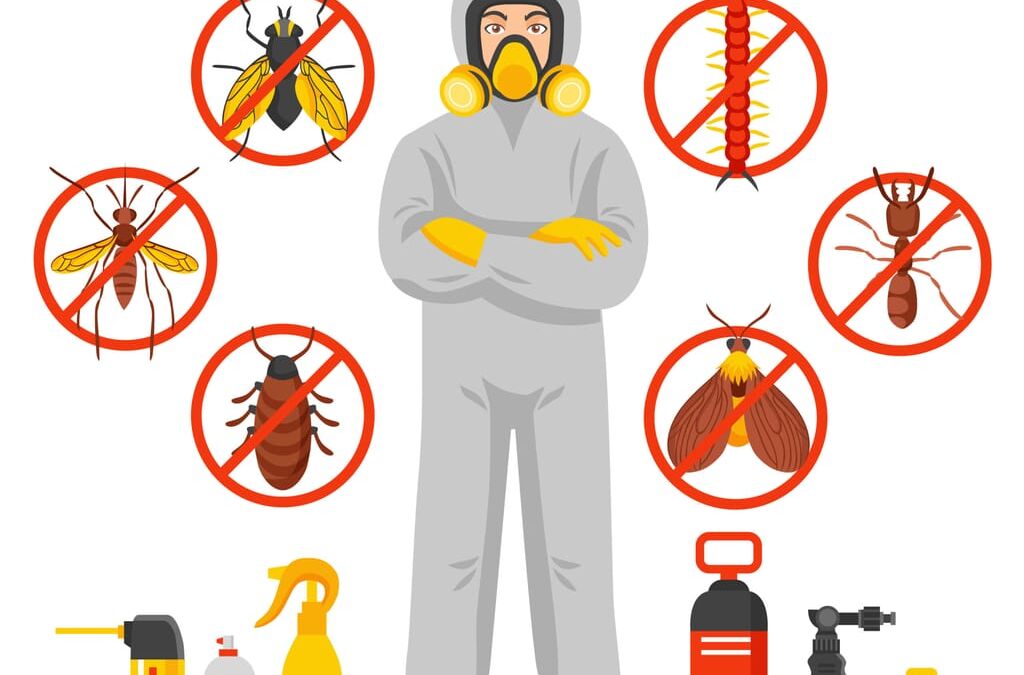Safe and Trusted Pest Control for Lasting Security
Effective parasite administration requires a complex technique that balances eco-friendly stability with the requirement for reliable bug suppression. The subtleties of these methods might not be promptly clear, prompting a more detailed assessment of the practices that can lead to lasting pest control end results.
Understanding Parasite Control Techniques
Pest control includes a range of approaches focused on managing and eradicating unwanted pests and rodents that can endanger both health and property. Comprehending these methods is vital for effective bug monitoring.
The main groups of pest control techniques consist of mechanical, organic, and chemical methods. Mechanical approaches entail physical barriers and traps to stop pest entrance and capture undesirable varieties. Using screens on windows or utilizing sticky catches can dramatically lower pest populations without introducing damaging materials - exterminator coquitlam.

Chemical bug control is typically the most recognized method, making use of chemicals to get rid of insects. These chemicals can be effective but must be made use of with caution to prevent adverse results on non-target types and the atmosphere.
Benefits of Eco-Friendly Solutions
How can environmentally friendly remedies change pest control methods? The adoption of environment-friendly pest control methods provides numerous benefits, dramatically enhancing the efficiency and security of pest administration (exterminator coquitlam). To start with, these remedies make use of natural active ingredients, reducing the dependence on unsafe chemicals that can position dangers to human health and wellness and the environment. This change not just protects pet dogs and households but also lessens the capacity for dirt and water contamination.

An additional benefit is the favorable effect on regional biodiversity. Environmentally friendly solutions are designed to target specific insects while preserving useful bugs and wildlife, advertising a balanced environment. This method lines up with the expanding consumer demand for sustainable methods, enhancing the reputation of insect control providers.
Integrated Bug Monitoring Methods
The implementation of eco-friendly remedies naturally leads to the adoption of Integrated Bug Monitoring (IPM) techniques, which better improve pest control efficiency. IPM is an alternative method that combines multiple tactics to take care of bug populaces while lessening environmental effect. This strategy emphasizes making use of organic, social, mechanical, and chemical controls, making sure a lasting and balanced approach of bug management.
One essential element of IPM is the thorough analysis of pest task and environmental problems. By keeping track of pest populaces and identifying their life process, experts can implement targeted treatments that interrupt the pest's environment or lifecycle, decreasing dependence on chemical pesticides. Furthermore, social techniques such as crop rotation and habitat manipulation can substantially decrease parasite establishment and recreation.
Another essential part is the use of organic control agents, such as useful pests or microbes, which can naturally suppress insect populations. When chemical applications are required, IPM prioritizes making use of low-risk pesticides and uses them precisely, decreasing exposure to non-target microorganisms and human beings.
Integrating IPM strategies not just enhances parasite control efficiency yet additionally promotes a much safer environment, straightening with the expanding need for sustainable practices in parasite administration.
Safe Practices for Homeowners
Understanding the value of secure methods in pest control can empower homeowners to successfully take care of insect issues while safeguarding their wellness and the setting. Applying non-toxic methods and preventive measures is important in decreasing direct exposure to hazardous chemicals.
House owners ought termite poison to first assess their environment for problems that draw in bugs, such as standing mess, water, and food waste. Consistently cleaning and securing access factors can prevent bugs from getting into the home. Utilizing natural deterrents, such as essential oils or diatomaceous planet, can give reliable alternatives to chemical pesticides.
When chemical therapies are essential, property owners need to go with products that are specifically identified as secure for residential usage. It is vital to comply with application guidelines thoroughly to avoid overexposure. Utilizing targeted therapies in areas where insects are recognized, rather than covering splashing, can considerably decrease chemical usage.
Last but not least, maintaining open communication with bug control professionals is vital. Property owners need to make inquiries regarding the safety of products made use of and demand environment-friendly alternatives whenever feasible. By adopting these safe practices, house owners can produce a much healthier living setting while properly taking care of pest issues.

Tips for Long-Term Protection
Establishing an insect management approach that stresses lasting defense can substantially boost the efficiency of the risk-free methods previously discussed. To achieve this, homeowners should apply normal assessments of their building, concentrating on hidden areas such as attic rooms, cellars, and crawl areas. Early detection of pest activity is crucial in preventing problems from holding.
Furthermore, maintaining a tidy atmosphere is important. This includes correct food storage, promptly cleansing spills, and regularly throwing away trash. These practices minimize attractants that link draw parasites right into the home. Securing entry factors, such as cracks around home windows and doors, can effectively obstruct prospective pest gain access to.
Landscaping needs to likewise be taken into consideration; keeping plants cut and maintaining a range in between greenery and the home lessens hiding areas for parasites. Utilizing all-natural deterrents, such as vital oils or diatomaceous earth, can further discourage infestations without considering rough chemicals.
Finally, teaming up with an expert insect control solution for routine assessments can supply an added layer of security. These experts can provide customized referrals and progressed therapies, ensuring that your home remains safeguarded versus bugs in the long-term.
Verdict
To conclude, trusted and secure parasite control requires a multifaceted approach that emphasizes environment-friendly techniques and incorporated bug monitoring. By applying all-natural deterrents, carrying out routine assessments, and preserving appropriate cleanliness, homeowner can substantially minimize bug populations while safeguarding advantageous insects and the environment. Cooperation with specialist bug control solutions improves the effectiveness of these strategies, making certain from this source customized services that offer lasting defense and assurance against future infestations.
Reliable bug management calls for a diverse method that balances eco-friendly stability with the requirement for effective parasite reductions. The adoption of green bug control methods supplies many benefits, substantially enhancing the performance and security of parasite monitoring.The implementation of eco-friendly options naturally leads to the fostering of Integrated Pest Administration (IPM) strategies, which better improve pest control efficiency. exterminator coquitlam. By keeping an eye on bug populations and determining their life cycles, practitioners can carry out targeted interventions that interrupt the pest's habitat or lifecycle, lowering reliance on chemical pesticides.In final thought, safe and trustworthy parasite control requires a diverse strategy that highlights green methods and integrated bug monitoring